
Three Pillars for Patient Engagement: Understand, Reflect, and Personalize
The modern patient experience is dramatically shaped not only by the technology that sits in clinics but also by the technology people carry with them every day. Patients today have access to a staggering amount of educational material online, personalized wellness, and medical functionality on their consumer devices. They are connected to communities of like-minded people via social media. This empowers patients to be more active participants in their health care, and as a result, they are often more discerning about the providers they use and how they interact with them. These trends were accelerated by the COVID pandemic when access to in-person healthcare became difficult to access. Many of these shifts in how patients approach their healthcare are here to stay, so healthcare organizations need to adapt their practices accordingly.
Below, we share three core pillars for achieving this engagement––understanding your patients, reflecting their needs via patient-centric resources, and personalizing their healthcare experience through the use of digital tools.
Understand: Gleaning Insights From Communities and Influencers
Many patients seek medical communities in online spaces. Many of these groups are scattered across Facebook, Reddit, and other social media platforms, allowing people facing similar health challenges to connect. These virtual spaces can provide invaluable emotional support for medical conditions that are often isolating. They also serve as valuable information hubs, with participants recommending providers, offering treatment advice, and sharing personal solutions. Patient influencers are often prominent within these communities, emerging as a trusted voice with relatively large audiences on TikTok or similar platforms.
These online communities are an important part of the healthcare ecosystem that organizations cannot afford to ignore. At their best, these social groups can provide meaningful insights into patient perspectives. Healthcare providers should participate in these discussions to provide guidance and establish themselves as trusted partners of this community. Unfortunately, these online forums can also fall victim to misinformation and “snake oil” salesmen, as well as the more benign inaccuracies caused by an over-reliance on anecdotal evidence. It’s imperative that healthcare organizations are aware of these issues and can communicate clear guidance and corrections when these misunderstandings threaten patient health. Overall, having a firm grasp of the online landscape of a given patient population is vital to ensure the appropriate information is reaching the right audience.
Reflect: Customized Patient Materials
Health information websites like WebMD have long been the first stop for every malady, from sprained ankles to feverish coughs. However, the educational value of these resources can be relatively low. Common tropes insist that these websites will diagnose you with a deadly disease after searching for information about a stubbed toe. This is, of course, an exaggeration. Still, it reveals an important truth: Many of these sites provide a baseline of helpful information but are too generic to apply to a broad swath of potential health concerns. This creates a significant demand for educational resources that are more personalized and speak directly to a patient’s needs.
Experience shows these materials must be accessible and considerate of the cultural diversity within a given population. A recent study by Wolters Kluwer Health’s childbirth program reinforces this. In this study, the researchers updated educational resources on maternal health to include more diverse images of patients and replaced clinical language with language emphasizing the patient’s perspective. This resulted in a 30% increase in start rates for new programs compared to the previous documents. By creating engaging, easily understood, and applicable resources for people of diverse backgrounds, healthcare organizations can establish themselves as crucial partners in the near-universal quest to better understand the patient experience.
Personalize: Adopting Accessible Digital Tools
In addition to unprecedented access to healthcare information, patients are also surrounded by an impressive array of digital tools to help monitor and organize their healthcare plans. For instance, healthcare providers now offer online portals for patients to schedule appointments, view test results, and exercise greater control over their information. Nestled within these portals are “telehealth” visits that allow patients to access care from the comfort of their homes. Wearable monitoring devices and health-oriented apps have also exploded over the last decade. These devices range from Fitbits and Apple watches that monitor heart rate to insulin pumps providing on-the-go injections of a life-saving drug. These devices allow patients to self-monitor important health indicators, further situating them as active drivers of their own healthcare decisions. The implementation of virtual diagnosis, consultation, and assessment applications is forecast to experience continued growth, and many of these platforms have begun integrating with AI and machine learning programs, representing a $15 billion global investment in healthcare AI.
Together, these technological advancements, online forums, and educational resources are reshaping how healthcare providers interact and collaborate with their patients. By embracing these trends, healthcare organizations can design effective communication strategies for the modern age. Healthcare organizations should invest resources in bringing their staff up-to-speed with digital communication tools so that healthcare practitioners feel empowered to effectively communicate with their diverse patient populations. When successfully incorporated, these digital tools have the power to improve patient satisfaction, better health outcomes, and create a more efficient healthcare system.
